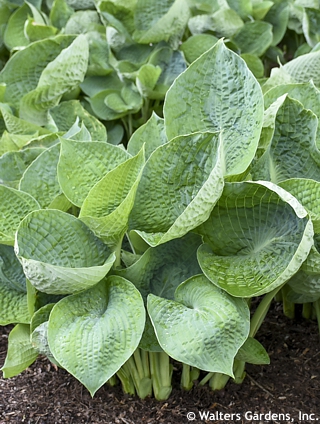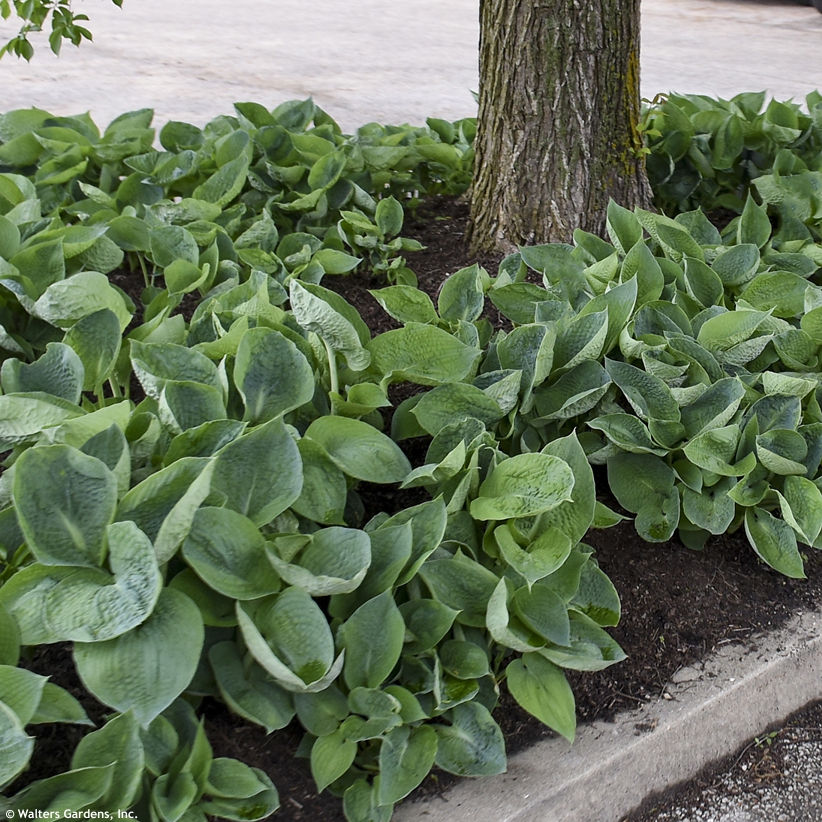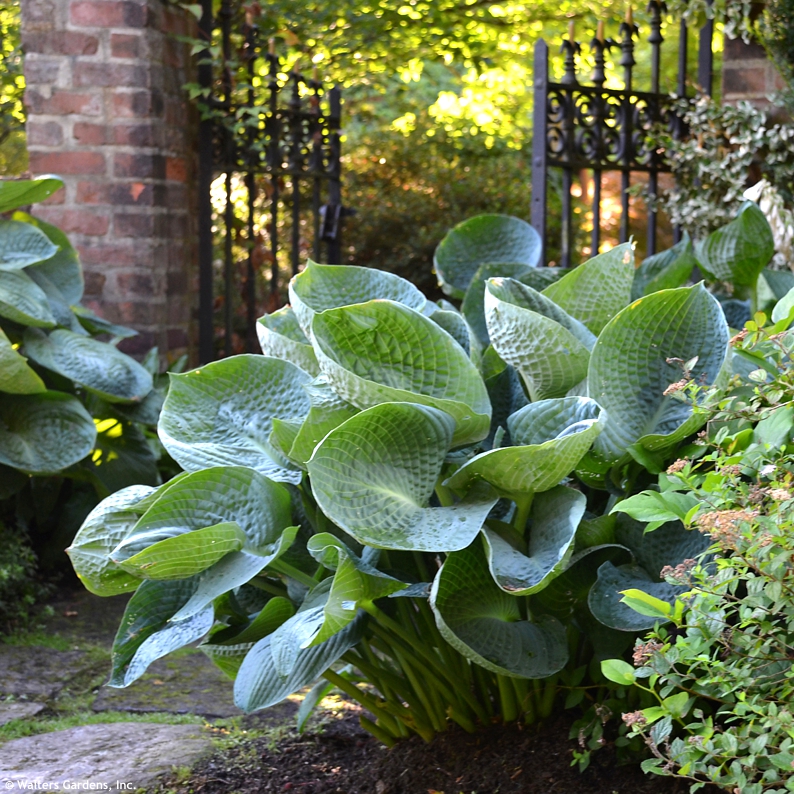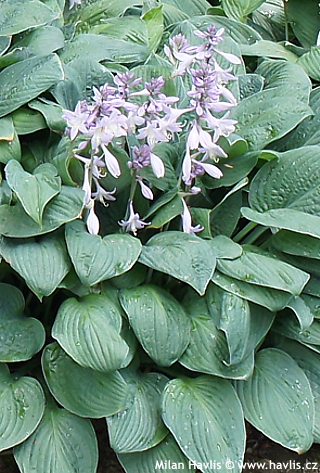Hosta 'ABIQUA DRINKING GOURD' plantain lily
size/type
low or groundcovering,low perennial
usual height
0,3-0,5m
usual width
0,5-0,8m
leaves
deciduous broadleaf
colour of leaves
flowers
less showy but noticeable
colour of flowers
blooming time
June-July
location
semi-shade / partial sun
soil type
any (acidic to alkaline)
soil moisture requirements
evenly moist (dislikes drought)
USDA zone (lowest)
3 (down to -40°C)
winter protection
for zone 5+6

for zone 7

categorized
Hosta
Plantain lilies are reliable perennials from East Russia, Korea, China, and Japan. In the wild they grow in various locations – along rocky streambanks, in alpine meadows, as well as in not too shaded woodland. They are cultivated for their bold foliage, often variegated, and bell-shaped flowers in summer.Description of the plant:
Drinking Gourd is another name for the Big Dipper asterism and if combined with Abiqua, which is a name of a waterfall in Oregon, USA, as well as a name for a hosta series, we have a beautiful large-leaved variety of plantain lily. Its rounded, deep blue-green, seersuckered leaves are 20-25 cm across and have a conspicuous tip. They curve their margins upwards, forming a cup almost 10 cm deep. For this reason, it is not recommended to grow under the trees whose waste, collected in the cups, would spoil the aesthetics. In early summer rise fleshy, 45-50 cm tall stems with profuse, terminal panicles composed of narrowly funnel-shaped, white flowers. Grow it as a clump or divide young plants and plant them nearby to create a dense groundcover. Hostas need constantly moist, fertile soil that never dries out – keep it always mulched. They respond well to fertilizing and produce stronger foliage and denser tufts. Ideal location is partial shade, or full sun with some shade during the day. Full shade is fine but plants may not flower as freely or at all. Drought can result in weakened plants that will be prone to diseases, and combination of drought and full sun will damage most variegated cultivars. Beware of slugs and snails who come to feast on their leaves without an invitation. Being deciduous, remove all wilted foliage from previous year in early spring and make sure not too damage emerging bourgeons. They cope well with polluted environment in cities. Hardy to about -40 °C (USDA zone 3).
Last update 27-02-2022
QUICK PRICE OVERVIEW
CURRENTLY SOLD OUT
WANT TO TRY A SIMILAR PLANT?

















